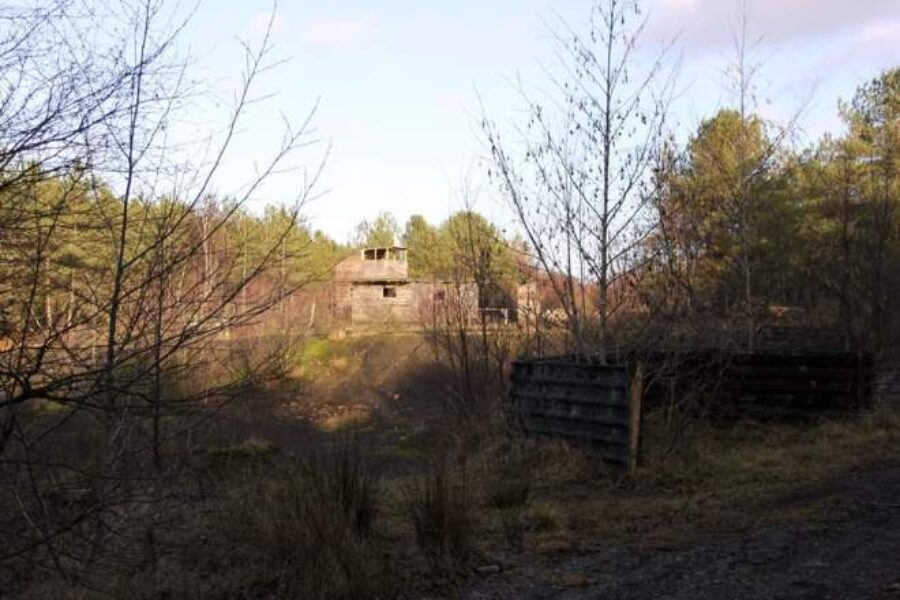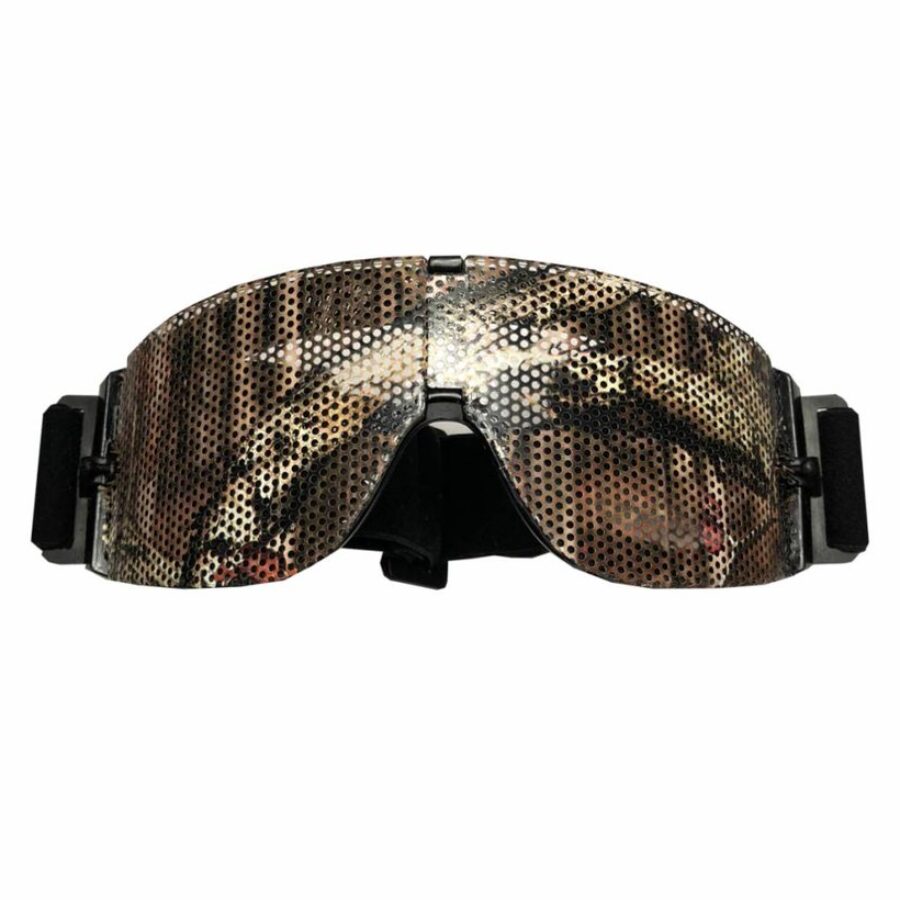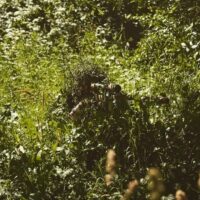The 7 S’s of Camouflage

(featured image – Raw War, Carlisle UK)
Can’t remember how many there are to be honest, so I’ll go with the 7 that I can remember/may have made up. These are the things you need to remember in the field to stay camouflaged. Having a good ghillie suit or camouflage system is only half of the battle. You need to know how to use it.
- Silhouette – The human outline is very distinctive. Break it up, but also be aware of how your shape interacts with the environment. The classic example is “skylining”, where you move across the top of a hill, outlining yourself. Move lower down, and be aware of the outline you make in the environment. Obviously, the suit will do a lot of the work for you, disguising the shape. If you’re running a leaf suit, ghillie cape or BDU’s, make sure to add 3D camo to all to help break up the human outline. Also, the head and shoulders, usually on show the most, must be disguised. Utilise a big hood, and pack extra material on the sides of the head to break up the neck outline. Pay attention also to the face area and the area under the chin – leaf balaclavas help but adding extra material to the bottom will hide that shadow. Don’t forget boots too! Prone is your best friend while setting up a position, make the lowest profile you can and be careful where you set up. Try and find recesses in the ground to help hide your silhouette, or objects to hide in front of or behind. Don’t pick obvious places where the enemy will check first, such as buildings or walls. A head popping up from or around something will be quickly spotted.
- Shine – Anything with a smooth surface, from a plastic buckle to the rifle and pistol, will give off a shine. Look closely and you will see that a lot of modern camouflages with high polyester content will have a slight sheen to them. Matt spray paint will help, but in the case of the rifle, add fabric tape and other materials to hide the surfaces. Spray paint can be used to make excellent patterns and colours, but still leave a very uniform flat surface that catches the light. Cover your scope with fabric and cut a hole in to see through (doesn’t affect the view) to hide any glint from the lens, and also to hide that giveaway black circle. By far the most common problem however, is the eye area. Mesh goggles are easier to camouflage, but if like me you don’t like mesh, use a Lenskin or mesh sticker to help hide it. I cut holes in the middle for the eyes to see clearly down the scope. Best of both worlds. If you do use mesh goggles, be sure to add some stripes of a different colour with paint to break up the goggle shape.
- Shadow – Use light carefully, be aware of casting shadows as you move. Move in the shadows if you can. No matter how good the camouflage, you can’t hide that big dark shape of a shadow.
- Shape – Not just the overall silhouette, be aware of the shapes and colours on your suit and whether they match the environment you’re in. String ghillies in woodland are as bad as leaf suits in the grass. Attach elastic loops or use elastic bands to add local vegetation to help match yourself to the background. Be aware of how it grows though – grass on the top of your head won’t look right, and piles of leaves don’t grow six feet tall.
- Shade – Make sure your colours match the environment. See Getting Colours Right.
- Sound – Sound is very important, on two levels. Obviously it goes without saying that you need to minimise your own noise, by taping anything loose like buckles and straps, making your rifle as quiet as possible (see guide), and moving quietly. When you move and you’re fairly close to the enemy, place your foot on the ground on the outside of your heel first, then roll the foot forward on the outside of the foot. This will reduce noise from footsteps. The second part of sound is being aware of noise around you. I have holes cut into the ear area of my ghillie balaclava so I can hear better. Often, we hear players long before we see them. For this reason, if I do have to carry a radio in game, I won’t wear a headset with it. It gets shoulder mounted on my left (I’m a right handed shooter), and can be turned off quickly if I need to go really quiet. Yes, you do end up with the radio making noise but the trade off is that you can hear things around you better and hopefully react first.
- Speed – Of movement. Or rather, lack of. Everything you do must be done slowly, unless there’s an emergency. Movement is a big giveaway, it’s easily spotted by your enemy. Turn your head slowly when scanning an area, change stance slowly, move your limbs slowly, move your weapon slowly (and smoothly). Also make sure your suit doesn’t interfere with anything. You don’t want to have to make any excess movement flicking raffia out of your face, or adjusting a hood. Get it right before the event to save trying to adjust it during. Think carefully about what kit you carry too. When selecting a rig, always make sure your load bearing sits high on the body, and avoid belt setups. Anything on the belt means you have to move your arm a bigger distance to reach it. Where aeg users will set their rigs up for speed, you should set yours up so that things are accessible with the least possible movement needed for everything, from radio use to mag changes.
Try to become familiar with all this to help you stay hidden in the field. The suit alone won’t do it, it’s all about mastering the finer details, especially how you as the sniper interact with the terrain. Learn to be part of it.









